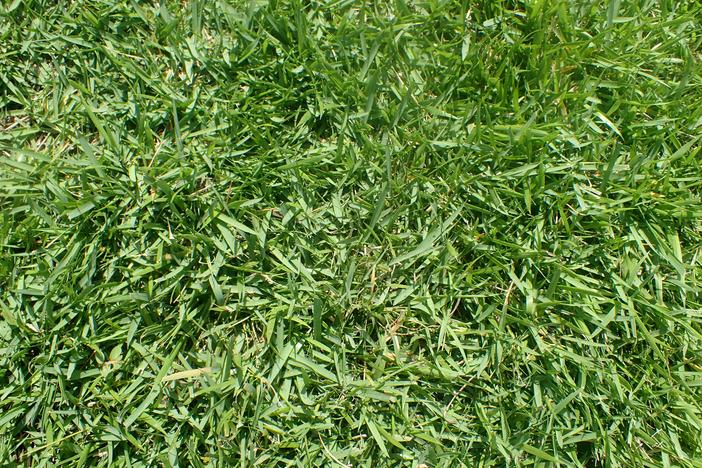Korean Lawn Grass
(Zoysia japonica)
Korean Lawn Grass (Zoysia japonica)
/
/

Krzysztof Ziarnek, Kenraiz
CC BY-SA 4.0
Image By:
Krzysztof Ziarnek, Kenraiz
Recorded By:
Copyright:
CC BY-SA 4.0
Copyright Notice:
Photo by: Krzysztof Ziarnek, Kenraiz | License Type: CC BY-SA 4.0 | License URL: https://creativecommons.org/licenses/by-sa/4.0 | Uploader: Kenraiz | Publisher: Wikipedia Commons











Estimated Native Range
Summary
Zoysia japonica, commonly known as Korean lawn grass or Japanese lawn grass, is a creeping, mat-forming perennial grass native to the coastal grasslands and open ground of Southeast Asia, including the Korean peninsula, China, Japan, and parts of Indonesia. It is well-adapted to a range of soil types but prefers well-drained, sandy soils and thrives in warm, temperate climates. This grass typically forms dense mats with smooth, stiff leaf blades that are a light green color, turning brown with frost and becoming dormant in winter. Z. japonica is valued for its ability to form a dense, wear-resistant turf that can outcompete weeds once established.
Zoysia japonica is renowned for its low maintenance requirements, including infrequent mowing needs and high tolerance to drought, which makes it a popular choice for lawns, golf courses, and parks, especially in areas with water restrictions. It is also resistant to diseases and pests, which contributes to its ease of care. However, its slow growth rate means it can take some time to establish fully. It can be planted using sod, sprigs, or plugs and requires full sun to part shade for optimal growth. While it tolerates freezing temperatures, it is less cold-tolerant than some other turfgrasses. Due to its potential invasiveness, it should be monitored and managed carefully to prevent it from spreading into natural areas outside of its native range.CC BY-SA 4.0
Zoysia japonica is renowned for its low maintenance requirements, including infrequent mowing needs and high tolerance to drought, which makes it a popular choice for lawns, golf courses, and parks, especially in areas with water restrictions. It is also resistant to diseases and pests, which contributes to its ease of care. However, its slow growth rate means it can take some time to establish fully. It can be planted using sod, sprigs, or plugs and requires full sun to part shade for optimal growth. While it tolerates freezing temperatures, it is less cold-tolerant than some other turfgrasses. Due to its potential invasiveness, it should be monitored and managed carefully to prevent it from spreading into natural areas outside of its native range.CC BY-SA 4.0
Plant Description
- Plant Type: Grass
- Height: 0.5-1 feet
- Width: 1-2 feet
- Growth Rate: Rapid
- Flower Color: N/A
- Flowering Season: Summer
- Leaf Retention: Deciduous
Growth Requirements
- Sun: Full Sun, Part Shade
- Water: Medium
- Drainage: Fast, Medium, Slow
Common Uses
Drought Tolerant, Groundcover, Low Maintenance, Street Planting
Natural Habitat
Coastal grasslands and open ground of Southeast Asia, including the Korean peninsula, China, Japan, and parts of Indonesia
Other Names
Common Names: Japanese Zoysia , Korean Grass , Korean Lawn Grass , Jandi , Jie Lü Cao , Shiba , Zoysia , 잔디
Scientific Names: Zoysia japonica , Osterdamia japonica , Zoysia japonica f. macrostachya , Zoysia japonica subsp. macrostachya , Zoysia japonica subsp. pallida , Zoysia japonica var. pallida , Zoysia koreana , Zoysia matrella subsp. japonica , Zoysia matrella var. japonica , Zoysia pungens subsp. japonica , Zoysia pungens var. japonica
GBIF Accepted Name: